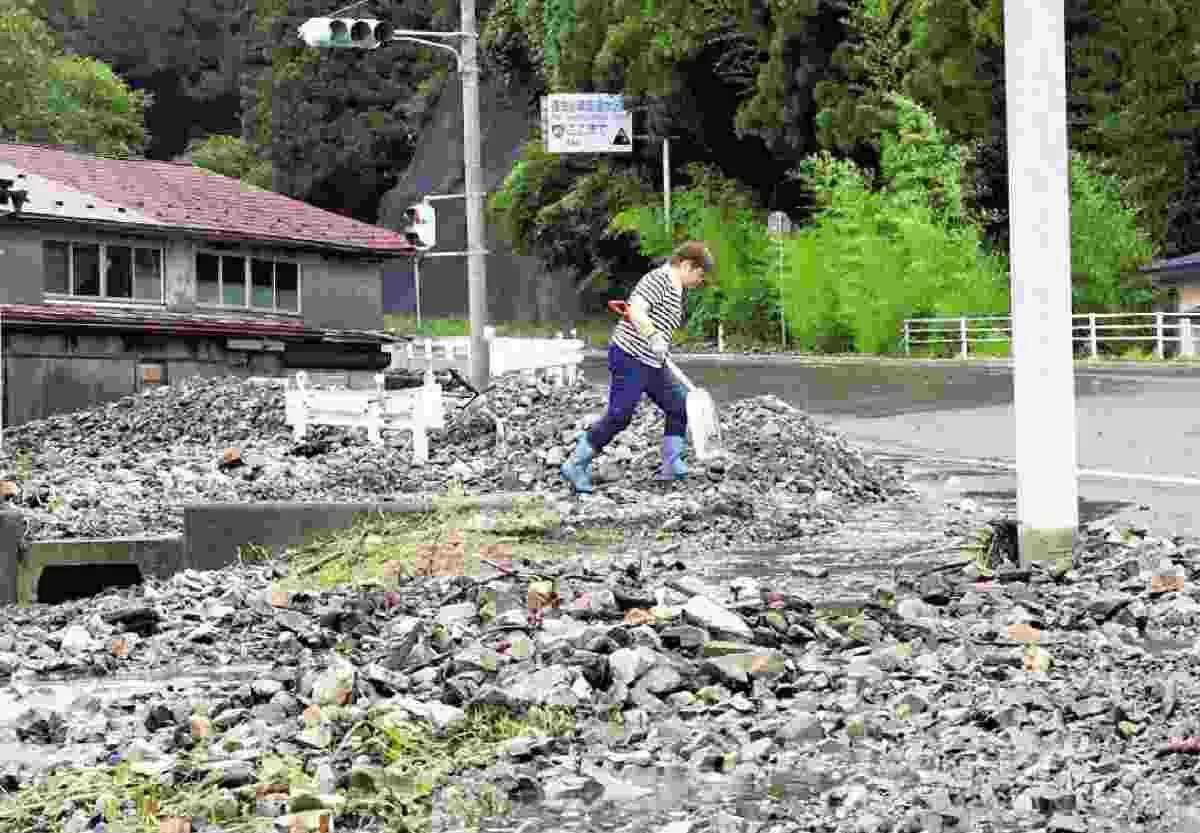Former Typhoon Drenches Northern Japan, Prompting Evacuations
A weakened storm, once Typhoon Maria, is causing heavy rainfall in northern Japan. Authorities have advised 170,000 residents to seek shelter due to flooding and mudslide risks, disrupting Obon holiday travel.

A former typhoon, now downgraded to a severe storm, is currently inundating northern Japan with intense rainfall. This weather event is causing significant disruptions during the Obon holiday, a time when Japanese people traditionally honor their ancestors.
The storm, previously known as Typhoon Maria, made landfall near Ofunato City in Iwate prefecture on August 12, 2024. It is now moving northwest at approximately 15 kph (9 mph), with wind speeds reaching up to 90 kph (56 mph), according to the Japan Meteorological Agency.
In response to the potential dangers, authorities have advised approximately 170,000 residents in Iwate, Aomori, and Miyagi prefectures to evacuate to shelters. This precautionary measure aims to mitigate risks associated with flooding and mudslides, which are common hazards in Japan during heavy rainfall events.

The city of Kuji in Iwate prefecture has experienced substantial precipitation, with up to 46 centimeters (18 inches) of rain falling over a 48-hour period. Meteorologists predict an additional 25 centimeters (9.8 inches) of rainfall through the following morning.
This storm marks the first to make landfall in the Tohoku region since a devastating typhoon in 2016. That previous event resulted in nine fatalities at a riverside nursing home in the town of Iwaizumi. The current situation has evoked memories of past disasters, prompting residents to take early precautions.
"I came early as I learned a lesson from the last typhoon, which destroyed my house."
The ongoing weather conditions have significantly impacted transportation networks. Several local train services have been suspended, and domestic flights at multiple airports in the affected area are experiencing delays or cancellations.
Japan's location on the Pacific Ring of Fire makes it particularly susceptible to natural disasters. The country's disaster preparedness is considered among the best globally, with the Japan Meteorological Agency playing a crucial role in monitoring and reporting weather patterns.
The Tohoku region, comprising the northeastern portion of Honshu (Japan's largest island), has faced numerous challenges in recent years. In addition to typhoons, the area was severely affected by the 2011 earthquake and tsunami. Climate scientists warn that the frequency and intensity of such weather events may increase due to climate change.
As the storm continues to move across the region, authorities remain vigilant, prioritizing public safety during this significant cultural holiday period.


































